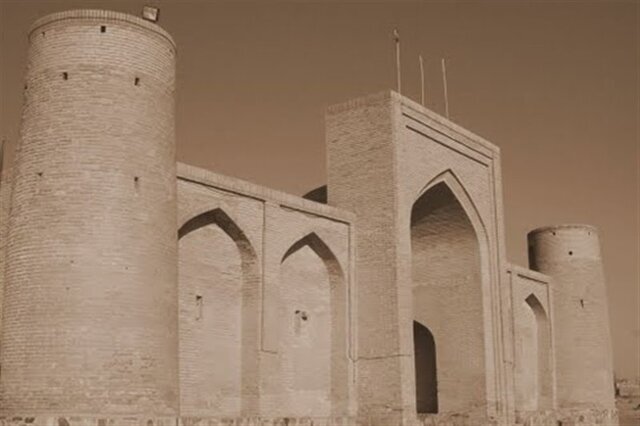Fakhr-e Davoud Rabat, a Timurid monument in Silk Road route

TEHRAN - Fakhr-e Davoud Rabat is one of the most prominent roofed caravanserais of the Khorasan region with unique architecture and a special geographic situation in the Silk Road route.
It was registered on UNESCO’s World Heritage List in September 2023 as a historical monument dating back to the Timurid era.
Rajabali Labbaf-Khaniki, a researcher and archaeologist from the Khorasan region, told ISNA that various forms of caravanserais or rabats used to be built with special construction materials in proportion to the geographical situation.
For example, a caravanserai located on a mountainous road was a roofed building built with stone and mud mortar, he said. While a caravanserai located in a plain were bigger and accommodated more travelers, he added.
He said royal caravanserais (Rabats) were built in busy roads which connected big cities to each other. They were palaces to accommodate kings and high-ranking officials, he added.
Fakhr-e Davoud Rabat is one of the most beautiful and roofed caravanserais along Silk Road in Khorasan region, he said.
It is located near southern part of Fakhr-e Davoud village, 56 kilometers southwest of Mashhad and 400 meters off the Mashhad-Neyshabur road, he added.
This caravanserai has been built with construction materials like brick, gypsum mortar, sand, limestone, and mudstone, he explained.
Labbaf-Khaniki added that there are four cylindrical towers at four corners of the caravanserai. Apart from empowering the monument, the towers were used as watchtower and defense tower to safeguard the security of caravanserai.
He continued that the interior space of the caravanserai includes a square-shaped hall in which four brick columns have been built in the middle and ivanches have been built on side walls. There is a dome on top of every ivanche to cover it.
Labbaf-Khaniki also said that Fakhr-e Davoud Rabat has been highly noticed by tourists and visitors.
Henri René d’Almany, French historian, has named it Hassanabad Rabat.
Hotham Schindler, an orientalist, wrote in his travelogue that Fakhr-e Davoud Village has a roofed caravanserai which has been repaired twice.
Also, “Afzal al-Molk”, a travel writer in 1899 , saw Fakhr-e Davoud and the caravanserai in this way: “The village of Fakhr-e Davoud is the place where caravans dock. There are 20 peasant families here. The caravanserai of Shah Abbasi was built here.”
Sani’ al-Dawla, the minister of impressions of Nassereddin Shah Qajar, who saw this building many times, wrote a detailed description of it and after stating its geographical location, he stated in the beginning of Al-Shams: “There is a caravanserai in Fakhr-e Davoud village, an equilateral square 20 cubits by 20 cubits, containing four towers. Inside the caravanserai is a square platform one cubit high, with a roof built above it. On this platform is a place for pilgrims and passersby, and eight other roofs have been built around this platform, under which the goods of the caravans are stored.”
This Khorasani researcher and archaeologist stated: “Although Schindler and Afzal-ol-Molk have attributed Fakhr-e Davoud Rabat to Shah Abbas Safavi, there is no inscription or evidence to support this. Considering the architectural style of the building and its similarity to the covered space of the Alaqband caravanserai and the covered part of the Amir Alishir Navai caravanserai in Sangbast, it can be supposed that this building was founded in the Timurid era and was later renovated.”
Fakhr-e Davoud Rabat was registered under the number 2108 on National Heritage List.
KD
Leave a Comment